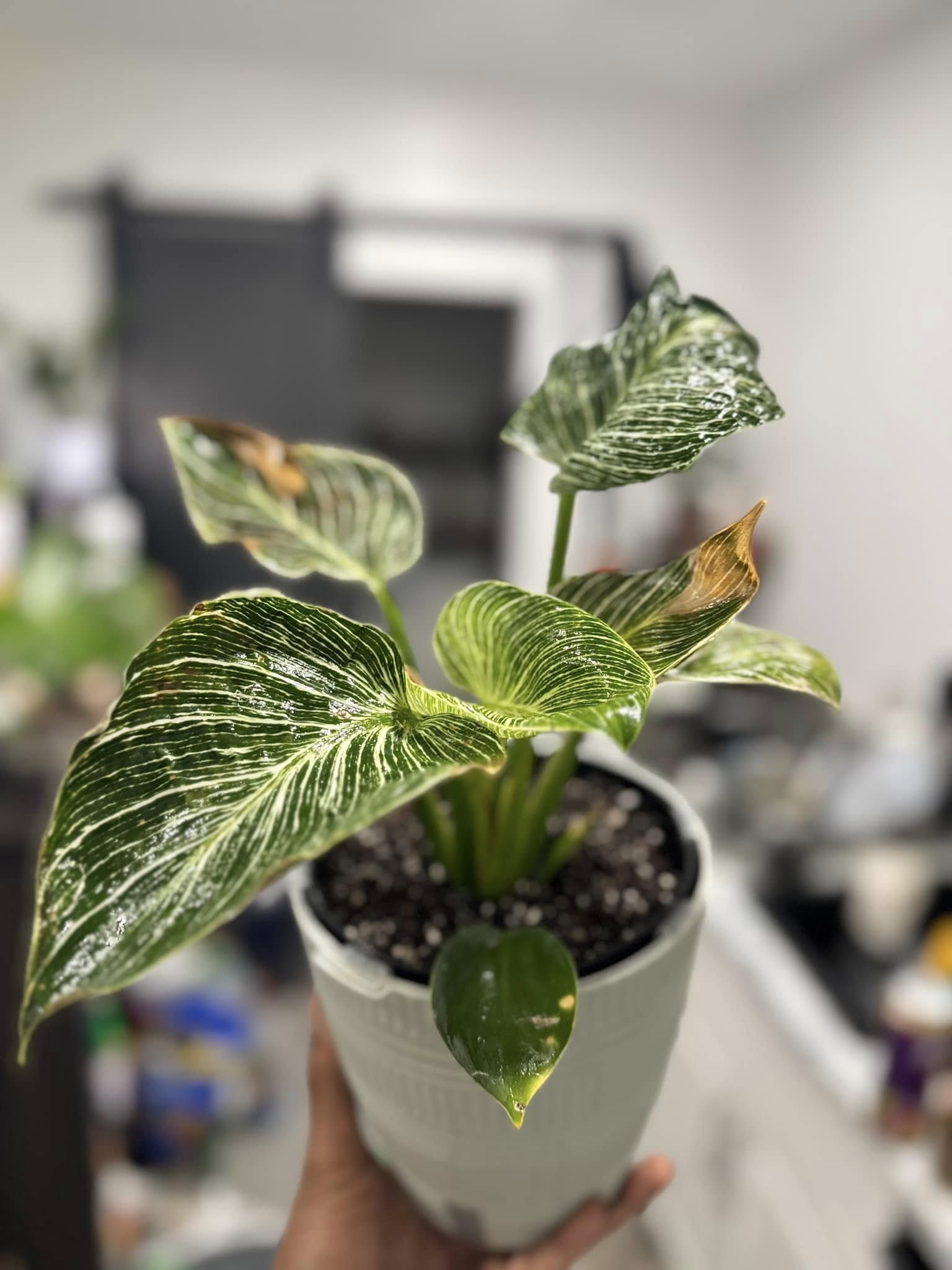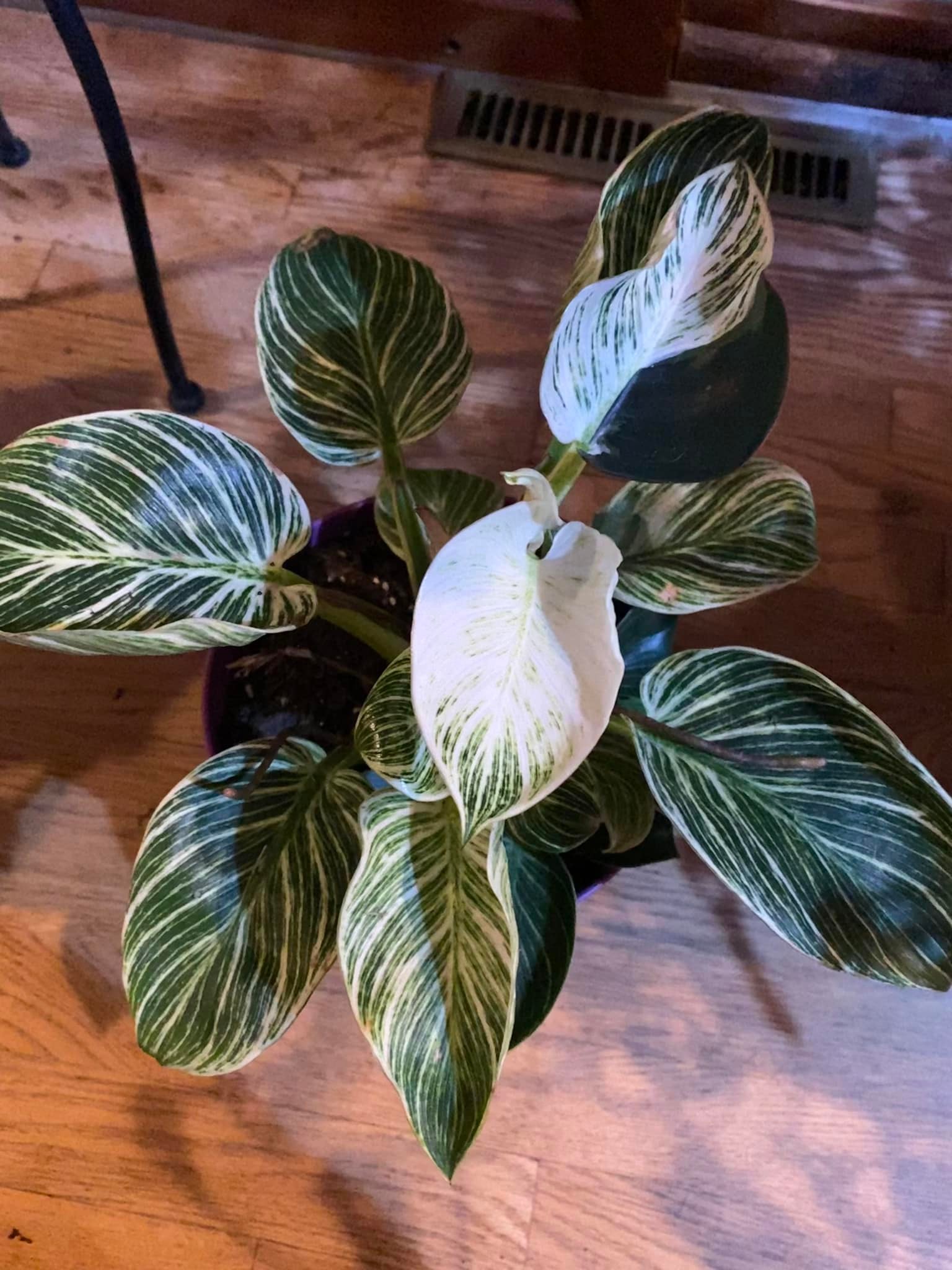
The Philodendron Birkin is a captivating houseplant known for its striking striped leaves and elegant appearance. With its lush green foliage adorned with creamy white pinstripes, this plant is a must-have for plant enthusiasts and beginners alike. But how do you care for a Philodendron Birkin to ensure it thrives and remains stunning? This guide will walk you through everything you need to know about keeping your Birkin happy and healthy.
Owning a Philodendron Birkin is more than just having a houseplant; it’s about nurturing a piece of nature inside your home. Understanding its growth patterns, light preferences, watering needs, and potential problems will help you enjoy a thriving plant with vibrant variegation. Let’s dive into the essentials of caring for this beauty.
I’ve provided detailed information in the article below to help with your concerns, However, if you still have questions or need more help, feel free to share photos of your plants or describe your issue on our Facebook Group. Just join the group and leave a comment on the most recent post — either I or someone from the community will respond as soon as possible. We also share helpful and unique plant care tips daily, so consider joining the group to stay updated!
What Makes the Philodendron Birkin So Unique?

It’s essential to understand what makes the Philodendron Birkin truly remarkable. Unlike other philodendrons, the Birkin does not vine. Instead, it grows in a compact, upright manner, making it a fantastic choice for tabletops, desks, and shelves. As a slow grower, it requires patience, but the reward is lush, beautifully patterned leaves that make it a showstopper.
The Philodendron Birkin is a hybrid variety that originated as a spontaneous mutation of another philodendron species. Its unique variegation is not always stable, meaning some leaves may appear more green or white than others. This unpredictable but beautiful feature adds to its charm, making every plant a little different.
How to Care for a Philodendron Birkin
1. Light Requirements
Philodendron Birkins thrive in bright, indirect light. While they can tolerate lower light conditions, their signature variegation may fade if they don’t get enough light.
- Best location: Near an east or north-facing window with filtered sunlight.
- Avoid: Direct sunlight, as it can scorch the delicate leaves.
- Artificial lighting: If natural light is limited, consider using a grow light to maintain its vibrancy.
The right lighting conditions will encourage healthy growth and maintain the beautiful striping on its leaves. If your Birkin’s new leaves are coming in more green than white, it’s a sign that it needs more light. A sheer curtain can help diffuse direct sunlight, preventing leaf burn while still allowing enough brightness to maintain variegation.
2. Watering Schedule
Watering your Philodendron Birkin correctly is crucial to its health. Overwatering can lead to root rot, while underwatering can cause leaf curling and browning.
- Water when the top inch of soil is dry. Stick your finger into the soil to check moisture levels.
- Use room-temperature water to prevent shocking the plant.
- Drainage is key. Always use a pot with drainage holes to prevent water from sitting at the bottom.
A good watering routine involves checking the soil’s moisture level at least once a week. If the soil feels dry to the touch about an inch below the surface, it’s time to water. Be careful not to let the plant sit in soggy soil, as this can lead to fungal issues and root rot.
3. Humidity and Temperature Needs
The Philodendron Birkin loves humidity, making it ideal for tropical environments. However, it can still adapt to average household humidity levels.
- Ideal humidity: 50-70%.
- Increase humidity with:
- A humidity tray with pebbles and water.
- Regular misting.
- A humidifier.
- Temperature range: 65-80°F (18-27°C). Avoid sudden temperature drops and drafts from air conditioners or heaters.
If your home has dry air, especially in the winter, consider placing your Birkin near a humidifier. Alternatively, grouping it with other plants can create a microclimate that retains moisture. If you notice brown edges on the leaves, that’s a sign that the humidity level is too low.
4. Choosing the Right Soil
A well-draining soil mix is essential for the Philodendron Birkin. The right soil will retain moisture while allowing excess water to escape.
- Best soil mix:
- Peat-based potting mix with perlite.
- A mix of orchid bark, coco coir, and perlite for improved aeration.
Heavy or compacted soil can suffocate the roots, leading to poor growth. A loose, airy mix will provide the roots with oxygen while ensuring excess water drains efficiently. Repotting every couple of years with fresh soil will also help maintain nutrient availability.
5. Fertilization Routine
Regular feeding ensures that your Birkin maintains its vibrant foliage and continues to grow steadily.
- Use a balanced liquid fertilizer (20-20-20) once a month during the growing season (spring and summer).
- Reduce feeding in fall and winter when growth slows down.
- Avoid over-fertilizing, as it can cause salt buildup and leaf burn.
Organic fertilizers, such as fish emulsion or worm castings, can also be used to promote healthy growth. Be sure to dilute synthetic fertilizers to half strength to prevent overfeeding.
6. Pruning and Maintenance
Philodendron Birkins don’t require frequent pruning, but occasional maintenance will keep them looking their best.
- Remove yellow or damaged leaves to encourage new growth.
- Wipe the leaves with a damp cloth to remove dust and improve photosynthesis.
- Rotate the plant periodically to ensure even growth and prevent it from leaning toward the light source.
7. Repotting: When and How?
Repotting your Philodendron Birkin ensures that it has enough space for root growth and fresh nutrients.
- Repot every 1-2 years or when roots start emerging from the drainage holes.
- Use a pot that is 1-2 inches larger than the current one.
- Refresh the soil mix to replenish nutrients.
8. Common Pests and Diseases
Like most houseplants, the Philodendron Birkin can encounter pests and diseases. However, with proper care, these can be prevented.
Pests to Watch For:
- Spider mites, aphids, and mealybugs. Check under leaves and near stems for signs of infestation.
- Solution: Use insecticidal soap or neem oil to treat affected areas.
Common Diseases:
- Root rot: Caused by overwatering. Ensure proper drainage to prevent this issue.
- Leaf spot diseases: Fungal infections due to excessive moisture on leaves. Always water at the base and avoid overhead watering.
9. Propagation: Growing More Birkins
Want more Philodendron Birkins? Propagation is an easy and rewarding process.
- Best method: Stem cuttings.
- Steps:
- Cut a healthy stem with at least one node.
- Place it in water or moist soil.
- Keep it in bright, indirect light and maintain humidity.
- Roots will develop in 2-4 weeks, after which you can plant it in soil.
